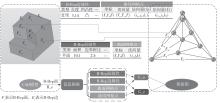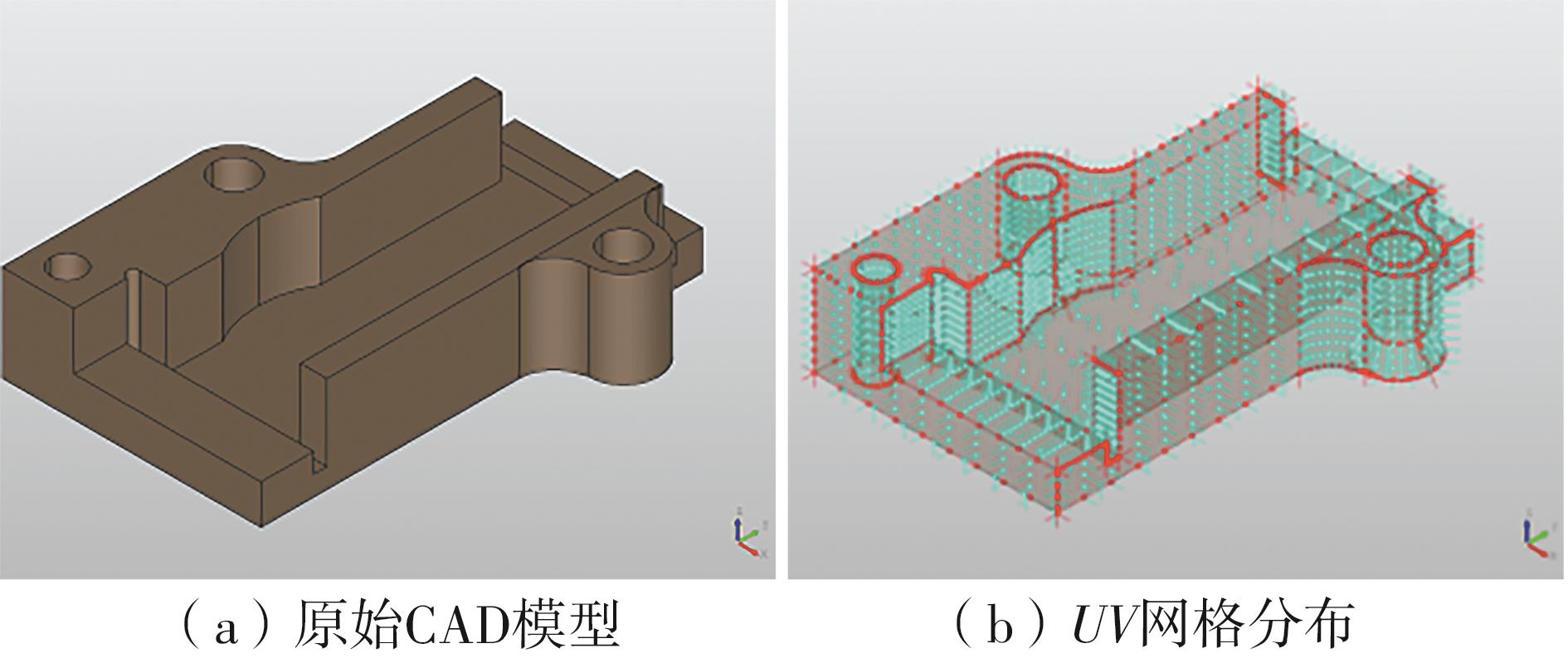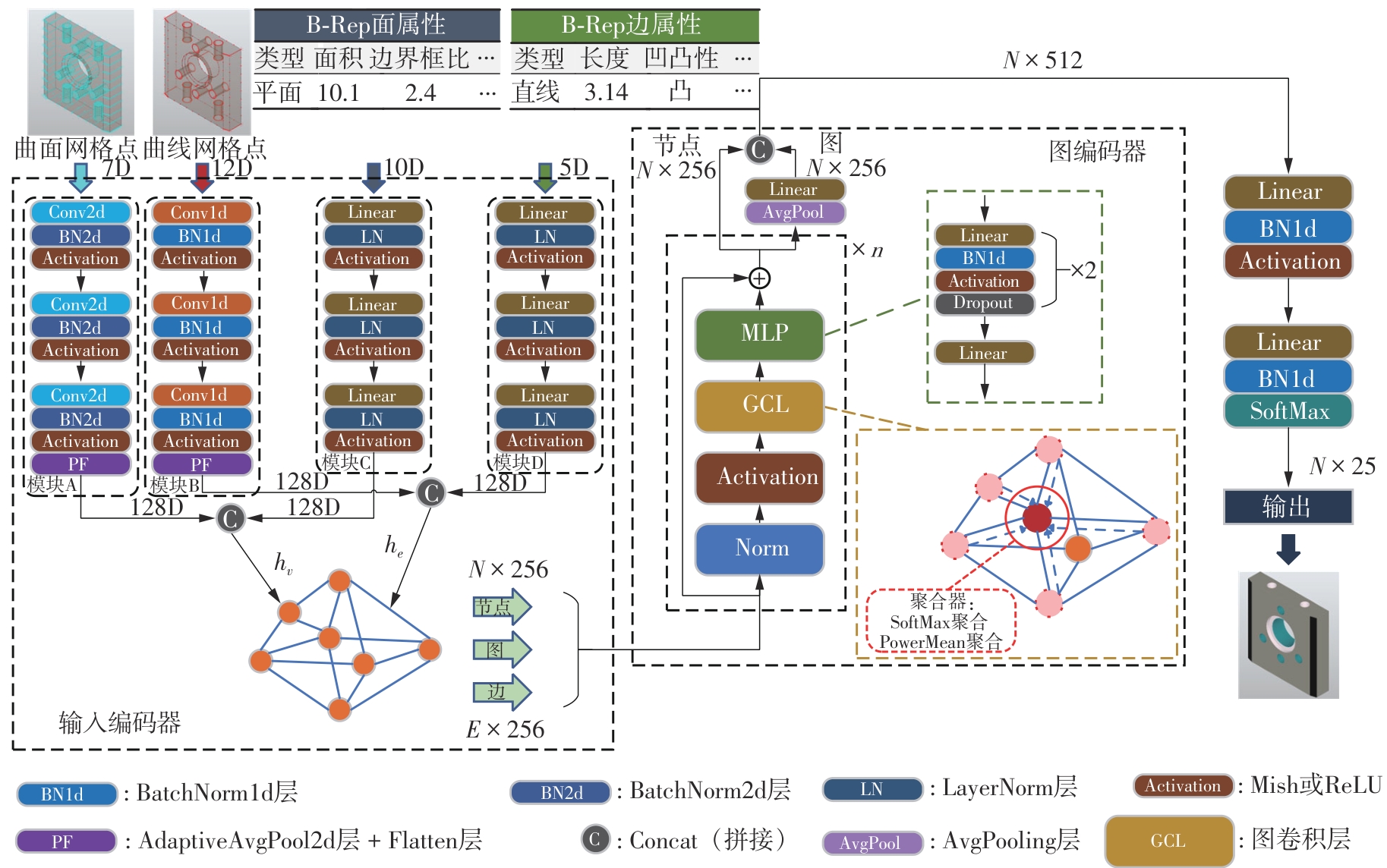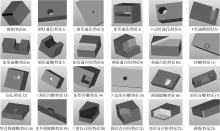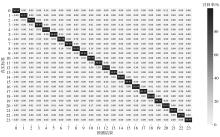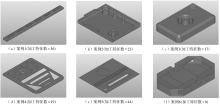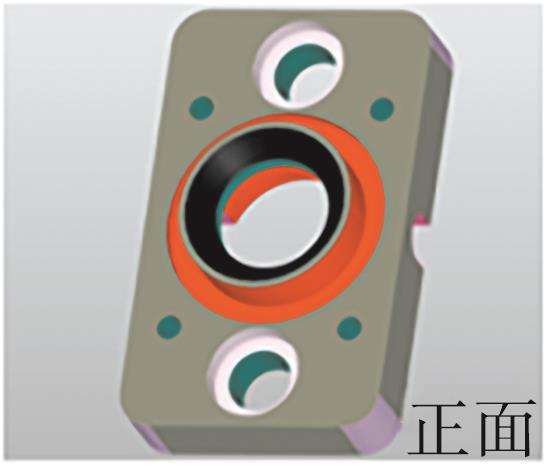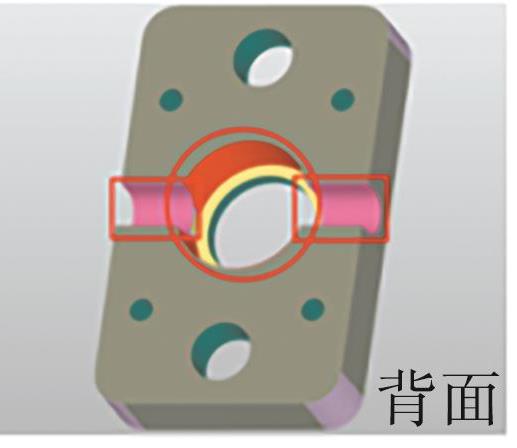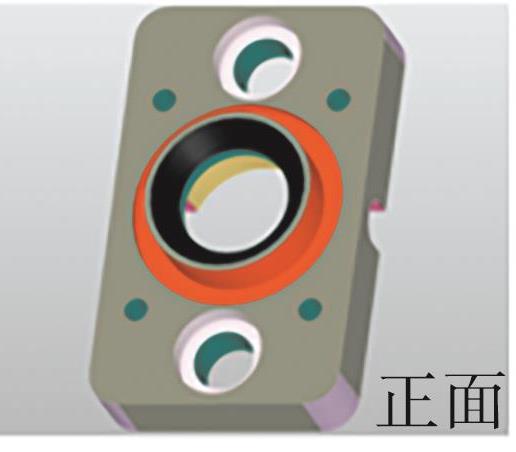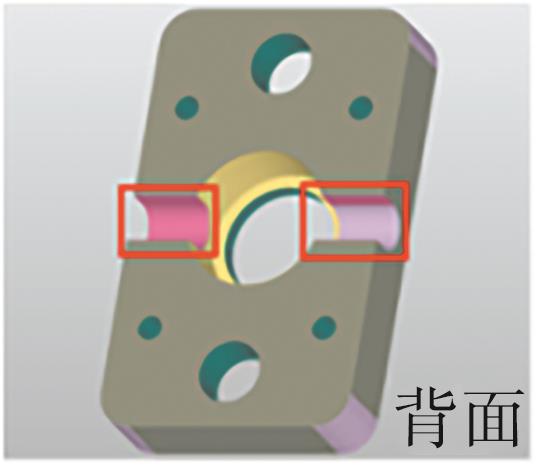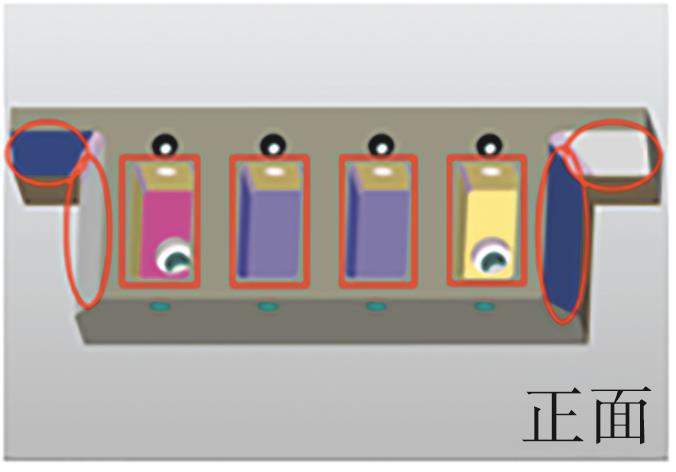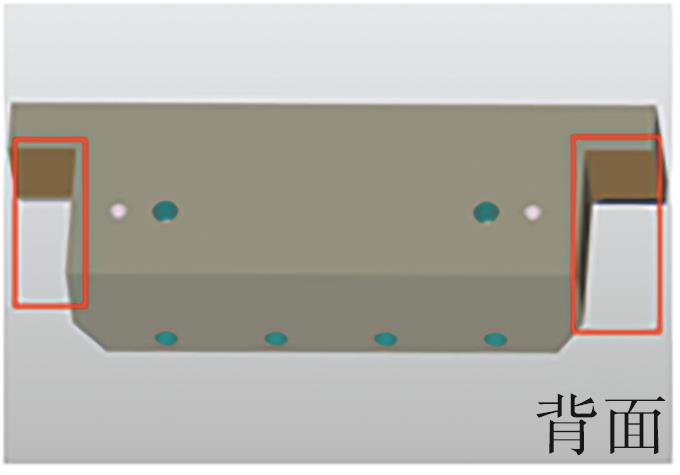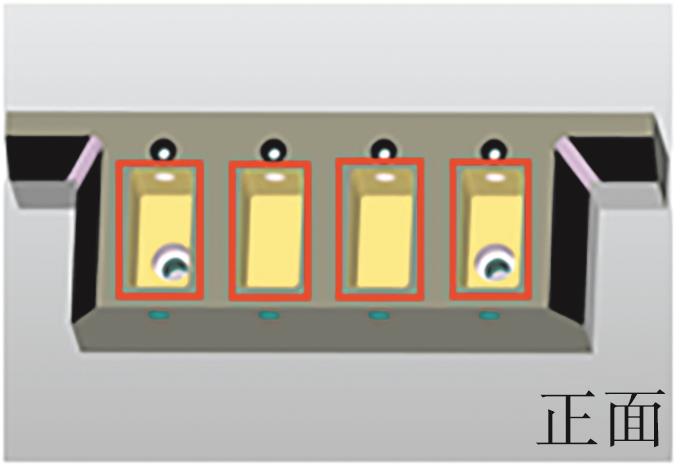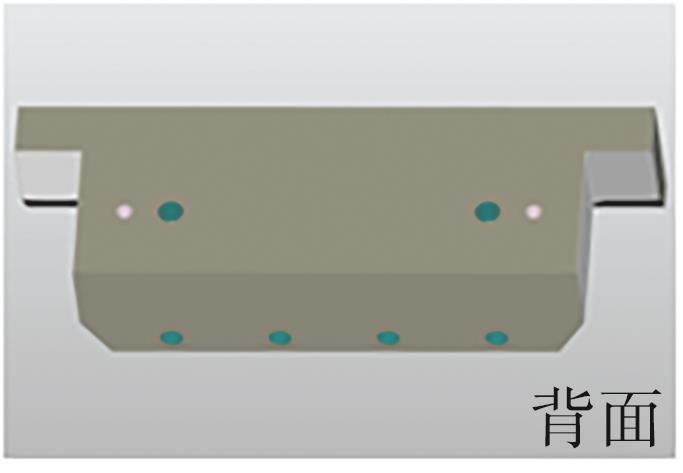Journal of South China University of Technology(Natural Science Edition) ›› 2025, Vol. 53 ›› Issue (5): 20-31.doi: 10.12141/j.issn.1000-565X.240329
• Mechanical Engineering • Previous Articles Next Articles
Machining Feature Recognition Method of B-Rep Model Based on Graph Neural Network
HU Guanghua, DAI Zhigang, WANG Qinghui
- School of Mechanical and Automotive Engineering,South China University of Technology,Guangzhou 510640,Guangdong,China
-
Received:2024-06-25Online:2025-05-25Published:2024-12-13 -
About author:胡广华(1980—),男,博士,副教授,主要从事机器视觉和智能制造等研究。E-mail: ghhu@scut.edu.cn -
Supported by:the Natural Science Foundation of Guangdong Province(2024A1515011997)
CLC Number:
Cite this article
HU Guanghua, DAI Zhigang, WANG Qinghui. Machining Feature Recognition Method of B-Rep Model Based on Graph Neural Network[J]. Journal of South China University of Technology(Natural Science Edition), 2025, 53(5): 20-31.
share this article
Table 4
2D CNN for encoding surface UV-grids"
| 网络层 | 输入特征尺寸 | 输出特征尺寸 |
|---|---|---|
| Conv2d(7,32,3,1,1) | (Nv,7,10,10) | (Nv,32,10,10) |
| BatchNorm2d | (Nv,32,10,10) | (Nv,32,10,10) |
| Activation | (Nv,32,10,10) | (Nv,32,10,10) |
| Conv2d(32,64,3,1,1) | (Nv,32,10,10) | (Nv,64,10,10) |
| BatchNorm2d | (Nv,64,10,10) | (Nv,64,10,10) |
| Activation | (Nv,64,10,10) | (Nv,64,10,10) |
| Conv2d(64,128,3,1,1) | (Nv,64,10,10) | (Nv,128,10,10) |
| BatchNorm2d | (Nv,128,10,10) | (Nv,128,10,10) |
| Activation | (Nv,128,10,10) | (Nv,128,10,10) |
| AdaptiveAvgPool2d | (Nv,128,10,10) | (Nv,128,1,1) |
| Flatten | (Nv,128,1,1) | (Nv,128) |
Table 5
1D CNN for encoding curve UV-grids"
| 网络层 | 输入特征尺寸 | 输出特征尺寸 |
|---|---|---|
| Conv1d(12,32,3,1,1) | (Ne,12,10) | (Ne,32,10) |
| BatchNorm1d | (Ne,32,10) | (Ne,32,10) |
| Activation | (Ne,32,10) | (Ne,32,10) |
| Conv1d(32,64,3,1,1) | (Ne,32,10) | (Ne,64,10) |
| BatchNorm1d | (Ne,64,10) | (Ne,64,10) |
| Activation | (Ne,64,10) | (Ne,64,10) |
| Conv1d(64,128,3,1,1) | (Ne,64,10) | (Ne,128,10) |
| BatchNorm1d | (Ne,128,10) | (Ne,128,10) |
| Activation | (Ne,128,10) | (Ne,128,10) |
| AdaptiveAvgPool1d | (Ne,128,10) | (Ne,128,1) |
| Flatten | (Ne,128,1) | (Ne,128) |
Table 11
Analysis of real cases"
| 识别后的CAD模型 | 识别结果描述 | |||
|---|---|---|---|---|
| AAGNet | 文中模型 | AAGNet | 文中模型 | |
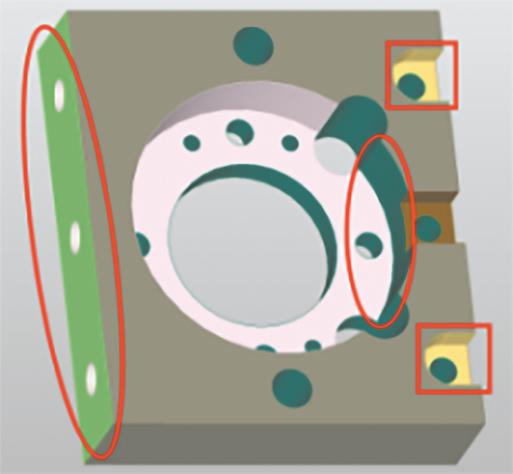 | 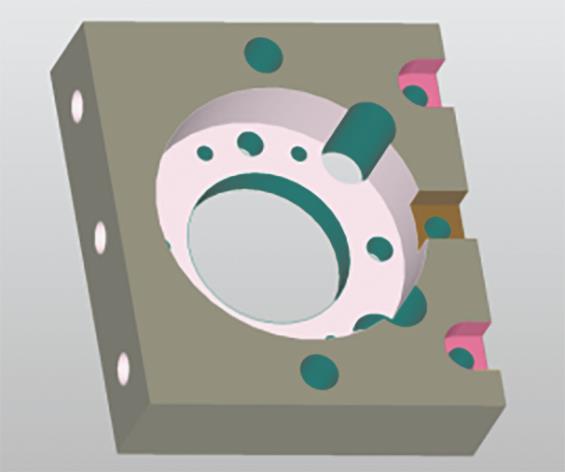 | 识别成功特征: 圆柱通孔×16,盲孔×3, 矩形通槽×1 识别失败特征: 盲孔×1,竖直圆形键槽×2 | 识别成功特征: 圆柱通孔×16, 矩形通槽×1,盲孔×4, 竖直圆形键槽×2 识别失败特征: 无 | |
| 零件A(加工特征数=23) | 识别率:86.96% | 识别率:100.00% | ||
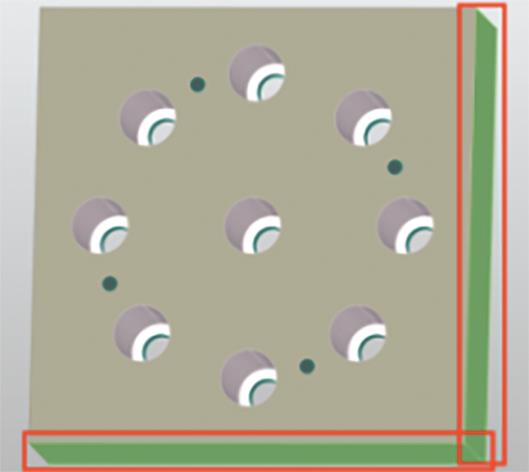 |  | 识别成功特征: 圆柱通孔×13,盲孔×9 识别失败特征: 无(毛坯面识别成矩形通台阶) | 识别成功特征: 圆柱通孔×13,盲孔×9 识别失败特征: 无 | |
| 零件B(加工特征数=22) | 识别率:100.00% | 识别率:100.00% | ||
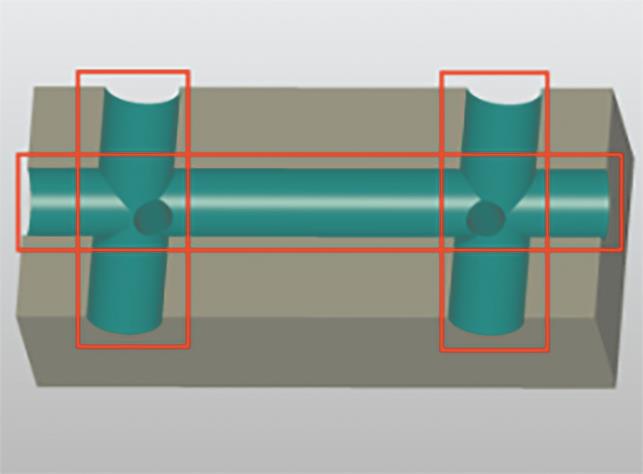 | 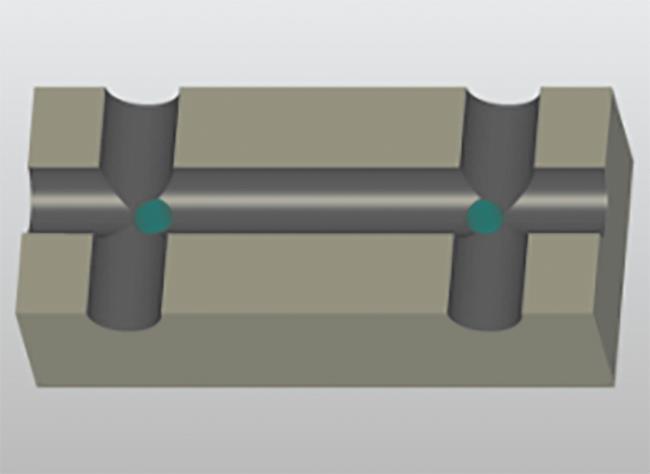 | 识别成功特征: 圆柱通孔×2 识别失败特征: 圆形通槽×3 | 识别成功特征: 圆柱通孔×2,圆形通槽×3 识别失败特征: 无 | |
| 零件C(加工特征数=5) | 识别率:40.00% | 识别率:100.00% | ||
|
| 识别成功特征: 圆柱通孔×7,倒角×1, 圆角×4,盲孔×2,环槽×1 识别失败特征: 圆端键槽×1, 竖直圆形通道×2 | 识别成功特征: 圆柱通孔×7,倒角×1, 圆角×4,盲孔×2, 环槽×1,圆端键槽×1 识别失败特征: 竖直圆形通道×2 | |
| 零件D(加工特征数=18) | 识别率:83.33% | 识别率:88.89% | ||
|
| 识别成功特征: 圆柱通孔×6,倒角×4, 圆角×2,盲孔×12 识别失败特征: 倒角×4,斜通台阶×2, 矩形圆角凹槽×4 | 识别成功特征: 圆柱通孔×6,倒角×8, 圆角×2,盲孔×12, 斜通台阶×2 识别失败特征: 矩形圆角凹槽×4 | |
| 零件E(加工特征数=34) | 识别率:70.59% | 识别率:88.24% | ||
| 1 | KROT K, CZAJKA J .Processing of design and technological data due to requirements of computer aided process planning systems[C]∥Proceedings of the International Conference on Intelligent Systems in Production Engineering and Maintenance.Wroclaw:Springer International Publishing,2019:267-274. |
| 2 | BABIC B, NESIC N, MILJKOVIC Z .A review of automated feature recognition with rule-based pattern recognition[J].Computers in Industry,2008,59(4):321-337. |
| 3 | JOSHI S, CHANG T C .Graph-based heuristics for recognition of machined features from a 3D solid model[J].Computer-Aided Design,1988,20(2):58-66. |
| 4 | VANDENBRANDE J H, REQUICHA A A G .Spatial reasoning for the automatic recognition of machinable features in solid models[J].IEEE Transactions on Pattern Analysis and Machine Intelligence,1993,15(12):1269-1285. |
| 5 | ZHANG Y, LUO X, ZHANG B,et al .Semantic approach to the automatic recognition of machining features[J].The International Journal of Advanced Manufacturing Technology,2017,89:417-437. |
| 6 | 赵鹏,盛步云 .基于切削体分解组合策略的工艺特征识别方法[J].华南理工大学学报(自然科学版),2011,39(8):30-35. |
| ZHAO Peng, SHENG Bu-yun .Craft characteristic recognition method based on the combination of cutting body decomposition[J].Journal of South China University of Technology (Natural Science Edition),2011,39(8):30-35. | |
| 7 | VERMA A K, RAJOTIA S .A hybrid machining feature recognition system[J].International Journal of Manufacturing Research,2009,4(3):343-361. |
| 8 | HAN J H, PRATT M, REGLI W C .Manufacturing feature recognition from solid models: a status report[J].IEEE Transactions on Robotics and Automation,2000,16(6):782-796. |
| 9 | ZHANG Z, JAISWAL P,RAI R .FeatureNet:machining feature recognition based on 3D convolution neural network[J].Computer-Aided Design,2018,101:12-22. |
| 10 | SHI P, QI Q, QIN Y,et al .A novel learning-based feature recognition method using multiple sectional view representation[J].Journal of Intelligent Manufacturing,2020,31:1291-1309. |
| 11 | SHI P, QI Q, QIN Y,et al .Intersecting machining feature localization and recognition via single shot multibox detector[J].IEEE Transactions on Industrial Informatics,2020,17(5):3292-3302. |
| 12 | ZHANG H, ZHANG S, ZHANG Y,et al .Machining feature recognition based on a novel multi-task deep learning network[J].Robotics and Computer-Integrated Manufacturing,2022,77:102369/1-17. |
| 13 | HANOCKA R, HERTZ A, FISH N,et al .MeshCNN: a network with an edge[J].ACM Transactions on Graphics (ToG),2019,38(4):1-12. |
| 14 | FENG Y, FENG Y, YOU H,et al .MeshNet: mesh neural network for 3D shape representation[C]∥Proceedings of the AAAI Conference on Artificial Intelligence.Honolulu:AAAI,2019:8279-8286. |
| 15 | CAO W, ROBINSON T, HUA Y,et al .Graph representation of 3D CAD models for machining feature recognition with deep learning[C]∥Proceedings of the Design Automation Conference, the ASME International Design Engineering Technical Conferences and the Computers and Information in Engineering Conference.[S.l.]:American Society of Mechanical Engineers,2020,84003:V11 AT 11A003/1-11. |
| 16 | COLLIGAN A R, ROBINSON T T, Nolan D C,et al .Hierarchical CADNet: learning from B-Reps for machining feature recognition[J].Computer-Aided Design,2022,147:103226/1-16. |
| 17 | WU H, LEI R, PENG Y,et al .AAGNet: a graph neural network towards multi-task machining feature recognition[J].Robotics and Computer-Integrated Manufacturing,2024,86:102661/1-20. |
| 18 | JAYARAMAN P K, SANGHI A, LAMBOURNE J G,et al .UV-Net: learning from boundary representations[C]∥Proceedings of the IEEE/CVF Conference on Computer Vision and Pattern Recognition 2021.[S.l.]:IEEE,2021:11703-11712. |
| 19 | GILMER J, SCHOENHOLZ S S, RILEY P F,et al .Neural message passing for quantum chemistry[C]∥Proceedings of the International Conference on Machine Learning.Sydney:PMLR,2017:1263-1272. |
| 20 | KIPF T N, WELLING M .Semi-supervised classification with graph convolutional networks[EB/OL].(2016-09-09) [2024-06-15].. |
| 1609.02907. | |
| 21 | HAMILTON W, YING Z, LESKOVEC J .Inductive representation learning on large graphs[C]∥Proceedings of the Conference on Advances in Neural Information Processing Systems.Long Beach:[s.n.],2017:1025-1035. |
| 22 | XU K, HU W, LESKOVEC J,et al .How powerful are graph neural networks?[EB/OL].(2018-10-01) [2024-06-15]. . |
| 23 | LI G, XIONG C, THABET A,et al .DeeperGCN:all you need to train deeper gcns[EB/OL].(2020-06-13) [2024-06-15].. |
| 07739. | |
| 24 | MISRA D .Mish:a self regularized non-monotonic activation function[EB/OL].(2019-08-23) [2024-06-15]. . |
| [1] |
ZUO Bin, DONG Tianhang, ZHANG Zehui, et al.
Proton Exchange Membrane Fuel Cell Fault Prediction Method Based on Deep Learning [J]. Journal of South China University of Technology(Natural Science Edition), 2025, 53(7): 1-. |
| [2] | CAO Ruifen, HU Weiling, LI Qiangsheng, BIN Yannan, ZHENG Chunhou. Prediction Method of IL-6 Inducing Peptides Based on Graph Neural Network [J]. Journal of South China University of Technology(Natural Science Edition), 2025, 53(5): 109-117. |
| [3] | HU Xizhi, CUI Bofei, WANG Qin, et al. Visual SLAM Algorithm Based on Memory Parking Scene [J]. Journal of South China University of Technology(Natural Science Edition), 2024, 52(6): 1-11. |
| [4] | LIU Hao, YUAN Hui, CHEN Chen, et al. Point Cloud Geometry Coding Framework Based on Sampling [J]. Journal of South China University of Technology(Natural Science Edition), 2024, 52(6): 148-156. |
| [5] | YANG Chunling, LIANG Ziwen. Feature-Domain Proximal High-Dimensional Gradient Descent Network for Image Compressed Sensing [J]. Journal of South China University of Technology(Natural Science Edition), 2024, 52(3): 119-130. |
| [6] | ZHENG Juanyi, DONG Jiahao, ZHANG Qingjue, et al. Reconfigurable Intelligence Surface Channel Estimation Algorithm Based on RDN [J]. Journal of South China University of Technology(Natural Science Edition), 2024, 52(3): 102-111. |
| [7] | ZHOU Lang, FAN Kun, QU Hua, et al. Forest Fire Recognition by Improved EfficientNet-E Model Based on ECA Attention Mechanism [J]. Journal of South China University of Technology(Natural Science Edition), 2024, 52(2): 42-49. |
| [8] | CAI Xiaodong, ZHOU Qingsong, YE Qing. Social Recommendation Model Based on Dynamic Neighborhood Sampling [J]. Journal of South China University of Technology(Natural Science Edition), 2024, 52(2): 32-41. |
| [9] | CHEN Qiong, FENG Yuan, LI Zhiqun, YANG Yong. Semantic-Visual Consistency Constraint Network for Zero-Shot Image Semantic Segmentation [J]. Journal of South China University of Technology(Natural Science Edition), 2024, 52(10): 41-50. |
| [10] | LIU Weipeng, LI Xu, REN Ziwen, QI Yedong. Algorithm for Multiscale Residual Deformable Lung CT Image Registration [J]. Journal of South China University of Technology(Natural Science Edition), 2024, 52(10): 135-145. |
| [11] | HU Guanghua, TU Qianxi. Surface Defect Detection Method for Industrial Products Based on Photometric Stereo and Dual Stream Feature Fusion Network [J]. Journal of South China University of Technology(Natural Science Edition), 2024, 52(10): 112-123. |
| [12] | LI Fang, GUO Weisen, ZHANG Ping, et al.. Prediction Technique for Remaining Useful Life of Bearing Based on Spatial-Temporal Dual Cell State [J]. Journal of South China University of Technology(Natural Science Edition), 2023, 51(9): 69-81. |
| [13] | SU Jindian, YU Shanshan, HONG Xiaobin. A Self-Supervised Pre-Training Method for Chinese Spelling Correction [J]. Journal of South China University of Technology(Natural Science Edition), 2023, 51(9): 90-98. |
| [14] | LI Jiachun, LI Bowen, LIN Weiwei. AdfNet: An Adaptive Deep Forgery Detection Network Based on Diverse Features [J]. Journal of South China University of Technology(Natural Science Edition), 2023, 51(9): 82-89. |
| [15] | GUO Enqiang, FU Xinsha. Dropped Object Detection Method Based on Feature Similarity Learning [J]. Journal of South China University of Technology(Natural Science Edition), 2023, 51(6): 30-41. |
| Viewed | ||||||
|
Full text |
|
|||||
|
Abstract |
|
|||||
